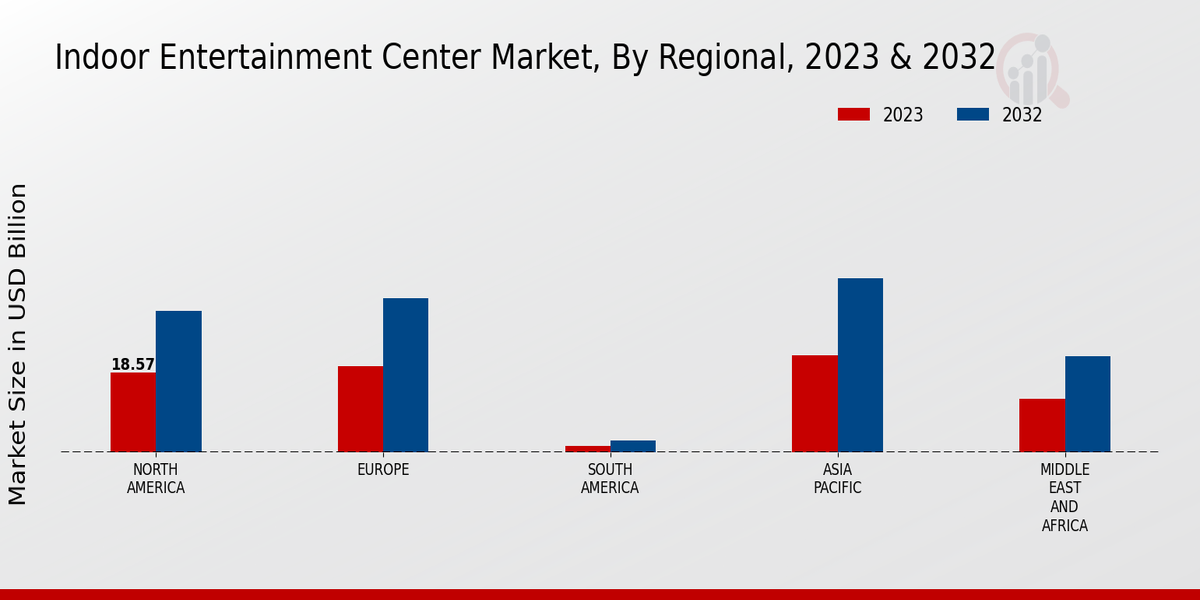Urbanization Trends
Urbanization is a significant driver of the Global Indoor Entertainment Center Market Industry. As more people migrate to urban areas, the demand for accessible entertainment options increases. Urban centers often lack sufficient outdoor recreational spaces, making indoor entertainment venues essential for leisure activities. This trend is particularly pronounced in densely populated cities where families seek convenient entertainment solutions. For example, cities in North America and Europe are witnessing a surge in the establishment of indoor entertainment centers, which cater to urban dwellers looking for engaging activities. This urban-centric growth is expected to bolster the market's expansion in the coming years.
Rising Disposable Income
The Global Indoor Entertainment Center Market Industry is experiencing growth driven by increasing disposable incomes across various demographics. As individuals and families have more financial resources, they are more inclined to spend on leisure activities. This trend is particularly evident in emerging economies, where rising middle-class populations are seeking diverse entertainment options. For instance, in regions such as Asia-Pacific, the growth of disposable income is projected to enhance consumer spending on indoor entertainment, contributing to the market's expansion. The market is expected to reach 60.6 USD Billion in 2024, reflecting this shift in consumer behavior.
Family-Oriented Activities
The Global Indoor Entertainment Center Market Industry is increasingly focusing on family-oriented activities, which are vital for attracting visitors. Centers that provide a safe and engaging environment for families tend to see higher foot traffic and repeat visits. Activities designed for all age groups, such as interactive games, educational experiences, and themed events, create a family-friendly atmosphere. This focus on family entertainment not only enhances customer satisfaction but also encourages longer stays and increased spending. As families prioritize quality time together, the demand for such offerings is likely to drive market growth, contributing to the projected increase in market size.
Technological Advancements
Technological innovations play a crucial role in shaping the Global Indoor Entertainment Center Market Industry. The integration of advanced technologies such as virtual reality, augmented reality, and interactive gaming experiences enhances customer engagement and satisfaction. Facilities that adopt these technologies can attract a broader audience, including tech-savvy younger generations. For example, VR gaming zones within entertainment centers have gained popularity, providing immersive experiences that traditional entertainment options cannot match. This trend indicates a potential for significant growth, with the market projected to grow at a CAGR of 7.5% from 2025 to 2035, reaching 134.2 USD Billion by 2035.
Diverse Entertainment Offerings
The Global Indoor Entertainment Center Market Industry benefits from the diversification of entertainment offerings. Centers are increasingly incorporating a variety of activities, such as bowling, arcade games, escape rooms, and dining options, catering to a wide range of customer preferences. This variety not only attracts different age groups but also encourages longer visits and increased spending per visit. For instance, family entertainment centers that combine dining with interactive games have seen a rise in popularity, appealing to both children and adults. This diversification strategy is likely to contribute to sustained market growth as centers adapt to evolving consumer demands.






















Leave a Comment